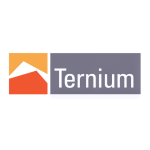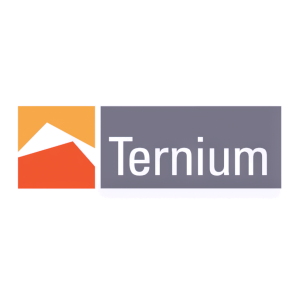Welcome to our dedicated page for Ternium SEC filings (Ticker: TX), a comprehensive resource for investors and traders seeking official regulatory documents including 10-K annual reports, 10-Q quarterly earnings, 8-K material events, and insider trading forms.
Reading a 300-page integrated steel and mining disclosure is no small task, especially when Ternium’s revenue depends on volatile iron-ore costs and regional steel prices. Investors often ask “Where can I find Ternium insider trading Form 4 transactions or decode its 20-F footnotes without spending hours?” That’s the problem we solve.
Stock Titan’s AI engine converts every filing—whether it’s a quarterly earnings report 10-Q filing (filed as 6-K for this foreign issuer), an annual report 10-K simplified (20-F), or a sudden 8-K material events explained notice—into concise language you can act on. Need to monitor Ternium Form 4 insider transactions in real-time? We surface executive stock moves the moment they hit EDGAR, then link those trades to steel-price trends so you understand the context.
Use our platform to:
- Scan AI-powered summaries of production volume shifts hidden deep in 6-Ks.
- Compare segment margins across Mexico, Argentina, and Colombia without digging through spreadsheets.
- Track planned furnace upgrades and CapEx commitments called out in the latest 20-F.
- Set alerts for Ternium executive stock transactions Form 4 before pivotal earnings releases.
Whether you’re double-checking currency exposure or asking, “Is Ternium’s proxy statement executive compensation aligned with shareholder returns?” our expert analysis and real-time updates give you answers fast. That’s understanding Ternium SEC documents with AI—no jargon, no waiting.
Ternium S.A. (NYSE: TX) agreed to acquire Nippon Steel and Mitsubishi’s remaining participations in Usiminas’ control group. The deal prices Usiminas ordinary shares at $2.06, for an aggregate cash consideration of approximately $315.2 million covering 153.1 million ordinary shares. Following closing, Ternium’s participation in the Usiminas control group would rise from 51.5% to 83.1%, subject to approval by Brazil’s antitrust authorities, and will be financed with cash on hand.
The Usiminas control group holds the majority of voting rights. After completion, the T/T group (Ternium Investments, Ternium Argentina and Confab) would collectively hold 92.9% of the control group, with Previdência Usiminas at 7.1%. Ternium reiterated its commitment to enhancing Usiminas’ competitiveness and value for stakeholders.
Ternium S.A. (TX) furnished interim financials as of September 30, 2025. In Q3, net sales were $3,954,562 thousand and operating income was $215,400 thousand. An income tax expense of $443,593 thousand included a $405 million write-down of deferred tax assets at Usiminas, driving a net loss of $269,869 thousand; profit attributable to owners was $20,608 thousand.
For the nine months, net sales were $11,834,309 thousand, operating income $546,453 thousand, and profit $131,777 thousand, with EPS of $0.15. Cash from operations was $1,786,090 thousand; capital expenditures used $2,038,020 thousand, including $1,606 million for Mexico projects. Cash and cash equivalents were $1,322,885 thousand; total borrowings were $2,045,954 thousand, and total equity was $16,300,245 thousand. The company recorded $116,600 thousand year‑to‑date for ongoing litigation related to the 2012 Usiminas acquisition and paid $353 million in dividends in May 2025. Ternium México entered a $1,250 million green syndicated loan at SOFR + 125 bps, repayable in six semi‑annual installments starting at month 30.
Ternium S.A. (TX) reported Q3 2025 results with net sales of
The quarter showed a net loss of
Cash from operations was
Ternium (TX) filed its H1-25 condensed financials. Net sales fell 15% YoY to $7.88 bn as weaker steel volumes/prices hurt the core Steel segment; Mining contributed $267 mn. Gross margin slipped to 14.5% (from 20.0%), driving IFRS operating income down 68% to $331 mn. However, the absence of last year’s $783 mn Usiminas-related litigation charge swung the bottom line to a $402 mn profit (vs. –$252 mn).
Cash from operations rose 10% to $1.25 bn, supported by a $727 mn working-capital release. The group spent $1.33 bn on capex—largely the Mexican DRI-EAF build—resulting in a $126 mn increase in cash to $1.86 bn plus $1.52 bn short-term investments. Net debt stands at $500 mn (gross debt $2.36 bn). Shareholders received $353 mn in May dividends.
Equity is stable at $16.6 bn. Key risks remain the Brazilian CSN lawsuit (potential exposure ≈$495 mn booked) and newly announced U.S. steel tariffs. Subsequent to period-end, Ternium México secured a $1.25 bn green syndicated loan (SOFR +125 bps) to fund the Pesquería expansion, adding liquidity but increasing leverage caps under new covenants.


